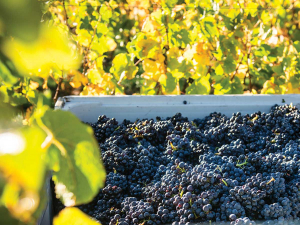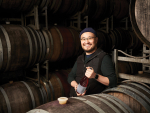A machine-learning algorithm could help change the face of New Zealand Pinot Noir, by offering data-based decisions for optimal Pinot production.
That’s one piece of a complex project looking to upset the traditional quality vs quantity “seesaw” of Pinot Noir production, says Dr Matias Kinzurik, Bragato Research Institute Research Programme Manager.
Matias, who has led the programme since it began in 2017, says hundreds of years of tradition govern the way growers and winemakers view Pinot Noir, with small crops seen as essential. The five-year Pinot Noir Programme involves research from vine to glass, and glass to vine, in order to “break” that position, by enabling increased Pinot Noir yields at high quality parameters, he says. “If we understand what quality is, could we produce more wine at high quality?”
The programme has two main objectives, starting with an understanding of what Pinot Noir quality means to both consumers and experts. “It is not as clear-cut as it is for other varieties of wine,” says Matias, referencing a recently published study from Dr Wendy Parr of Lincoln University, who worked with experts and consumers to ascertain perceptions of quality (see sidebox).
The study had several key findings, including a link between herbaceous notes and lower quality Pinot Noir. A subsequent project will dive into specifics around that herbaceous descriptor, then ascertain the chemical signatures behind it, while also drilling into the chemistry behind positive flavour or in-mouth attributes, says Matias.
The research found that colour has a “huge influence” on the perception of quality, especially when it comes to consumers, who are “all about the colour”, says Matias. While wine colour was not a major driver of Pinot Noir perceived quality when it came to professionals, the ability to see the wine did influence tasters’ judgments.
The second main objective of the programme is to use an enhanced understanding of quality perception to produce higher quantities of premium Pinot Noir, says Matias. Plant & Food Research (PFR) in Blenheim has done two years of vineyard trials, to compare crop loads and subsequent wine quality, although the third year of work was derailed by Covid-19, delaying those outcomes for a year. Meanwhile, PFR in Auckland is developing Pinot Noir berries in the lab – picked before veraison and placed in a Petri dish, to better understand the development and chemistry of the fruit.
The final piece of technology, being developed by Lincoln University, is the algorithm, which will bring it all together, and use the collected data on quality perception, yield parameters and Pinot Noir chemistry, to provide a decision-making tool. If the overall quality of New Zealand Pinot Noir increases, the reputational gain will allow companies to sell wine at a higher price, says Matias. “Then if we can break the yield-quality seesaw, there are larger volumes to be exported and sold at a higher price.”
The five-year Pinot Noir Programme received $1 million in funding from New Zealand Winegrowers and $9.3m from the Ministry of Business, Innovation and Employment’s Endeavour Fund.














